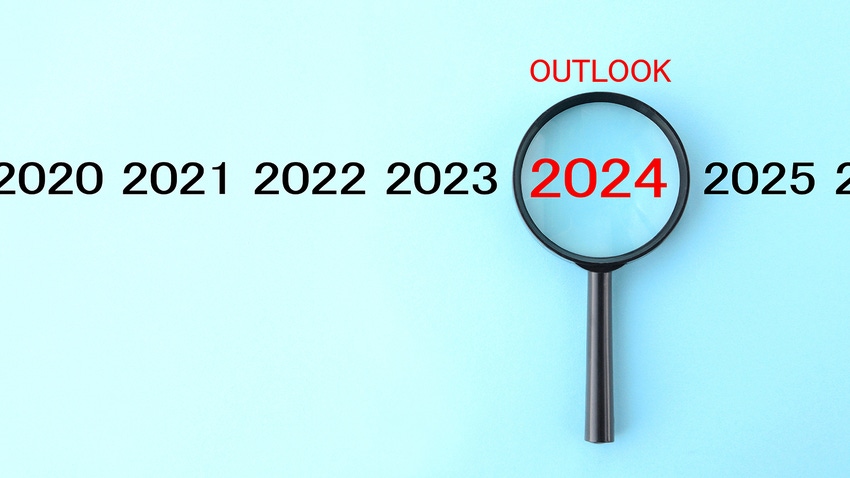Economic Outlook for the Plastics Industry in an NPE Year
Perc Pineda, Chief Economist at the Plastics Industry Association, sees hints of a “potential uptick” in 2024.
January 18, 2024

The return of the COVID-delayed global plastics exposition NPE in May after a six-year absence comes amid significant changes in the plastics industry.
In his recent analysis of the plastics landscape for the Plastics Industry Association (PLASTICS), Chief Economist Perc Pineda noted that 2023 was marked by “nuanced shifts across various sectors.
“Notably, the year witnessed divergent trajectories: While certain segments, such as plastics material pricing and resin manufacturing, grappled with equilibrium adjustments, others, like the mold for plastics trade, mirrored global economic oscillations.”
All things considered from his analysis, Pineda added that “the plastics industry, typically influenced by the broader macroeconomic landscape, witnessed an atypical 2023 marked by recessionary indicators juxtaposed against economic growth fueled by strong household spending. The resilience of the US consumer — particularly in essential consumption where plastics are integral — hints at a potential uptick in plastics production in 2024. Despite this, any industry pullback anticipated in 2024 might be milder than that experienced in 2023.”
Analyzing seven aspects of the plastics industry, Pineda expects the following for 2024:
Plastics product manufacturing: A lower rate of decline than in 2023, which saw “a notable pullback" from the production levels of 2022.
Plastics and rubber shipments: A “tepid rise in shipments” after relative stability in 2023, during which shipments ranged from $24.4 billion to $24.9 billion.
Plastics manufacturing employment: Continued imbalances in labor demand and supply after a “probable 1.7% decrease in the workforce engaged in plastics product manufacturing” throughout 2023.
Molds for plastics trades: Weaker improvements in exports compared with the previous two years, stemming from expected slowdown of global output — particularly in advanced economies.
Producer prices in plastics material and resin manufacturing: Continued lower resin costs in the wake of recently tempered demand coupled with increased supply from July to October. This could change with the introduction of “unexpected disruptions like adverse weather affecting resin production.”
Capacity utilization rates in plastics and resin manufacturing: Could increase at a slower pace than in 2023.
Plastics machinery imports: Any uptick “relies on increased plastics production, provided there is a limited inventory of plastics equipment available.”
Looking ahead, NPE 2024 will provide an ideal venue and forum for getting a sense of how the plastics industry is progressing toward midyear.
“For an industry that thrives on innovation, the forthcoming NPE, the largest gathering in the Western Hemisphere for the plastics industry, offers an avenue for post-COVID-19 in-person reconnection of the industry’s supply chain,” Pineda noted. “And the net benefit of that should be positive.”
NPE2024 runs from May 6 to 10 in Orlando, FL, at the Orange County Convention Center. To register to attend, go to the express registration page.
About the Author(s)
You May Also Like


